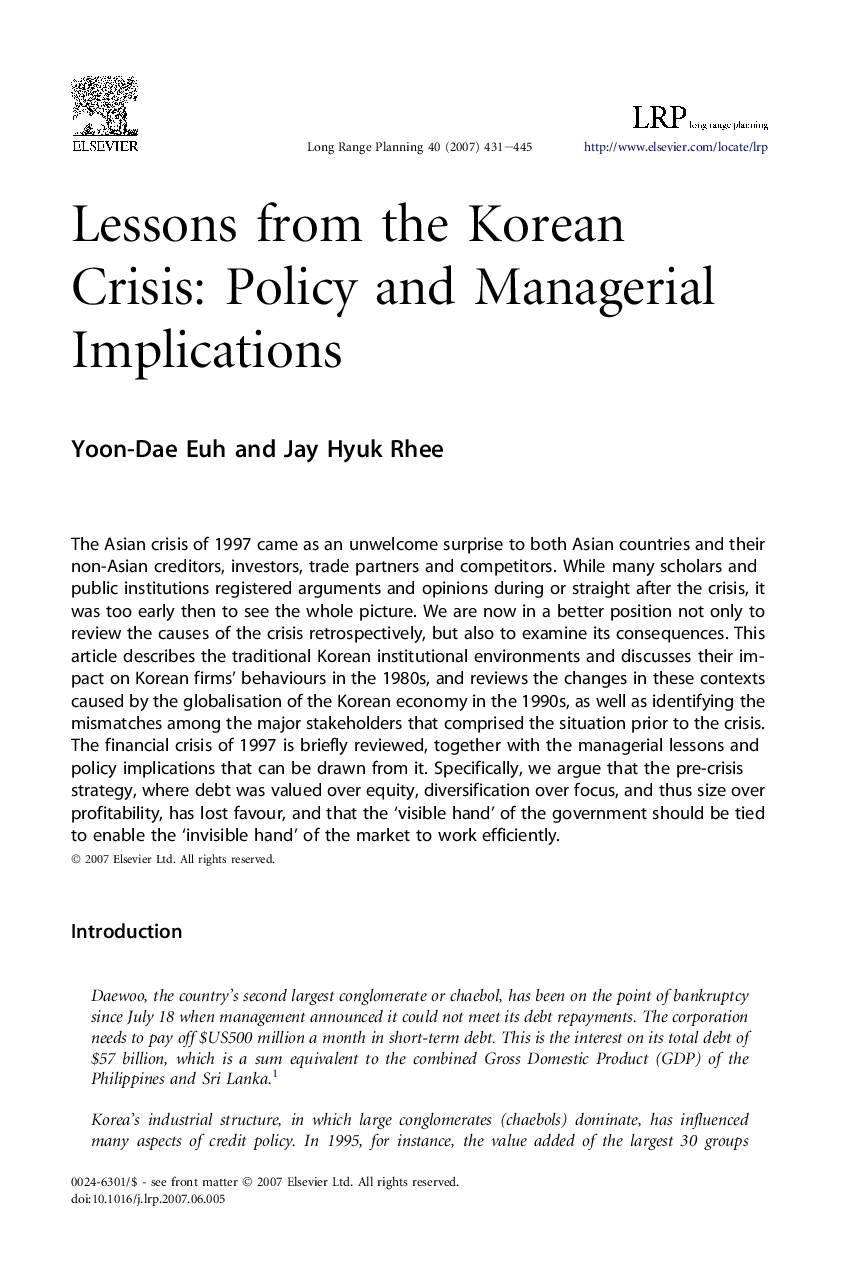| Article ID | Journal | Published Year | Pages | File Type |
|---|---|---|---|---|
| 1021670 | Long Range Planning | 2007 | 15 Pages |
The Asian crisis of 1997 came as an unwelcome surprise to both Asian countries and their non-Asian creditors, investors, trade partners and competitors. While many scholars and public institutions registered arguments and opinions during or straight after the crisis, it was too early then to see the whole picture. We are now in a better position not only to review the causes of the crisis retrospectively, but also to examine its consequences. This article describes the traditional Korean institutional environments and discusses their impact on Korean firms’ behaviours in the 1980s, and reviews the changes in these contexts caused by the globalisation of the Korean economy in the 1990s, as well as identifying the mismatches among the major stakeholders that comprised the situation prior to the crisis. The financial crisis of 1997 is briefly reviewed, together with the managerial lessons and policy implications that can be drawn from it. Specifically, we argue that the pre-crisis strategy, where debt was valued over equity, diversification over focus, and thus size over profitability, has lost favour, and that the ‘visible hand’ of the government should be tied to enable the ‘invisible hand’ of the market to work efficiently.
